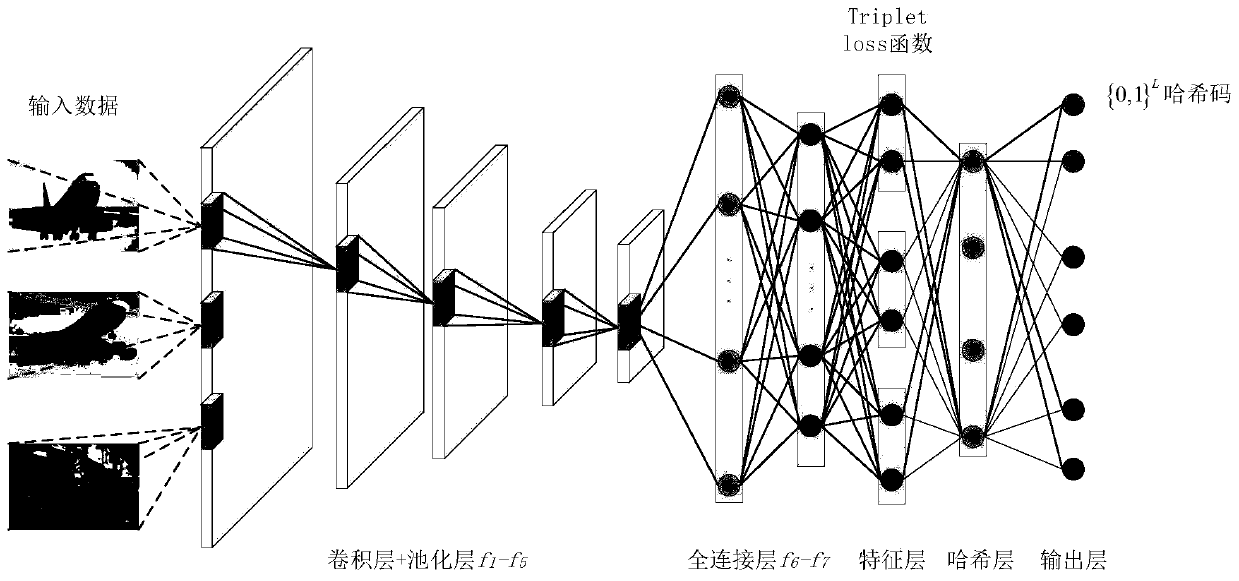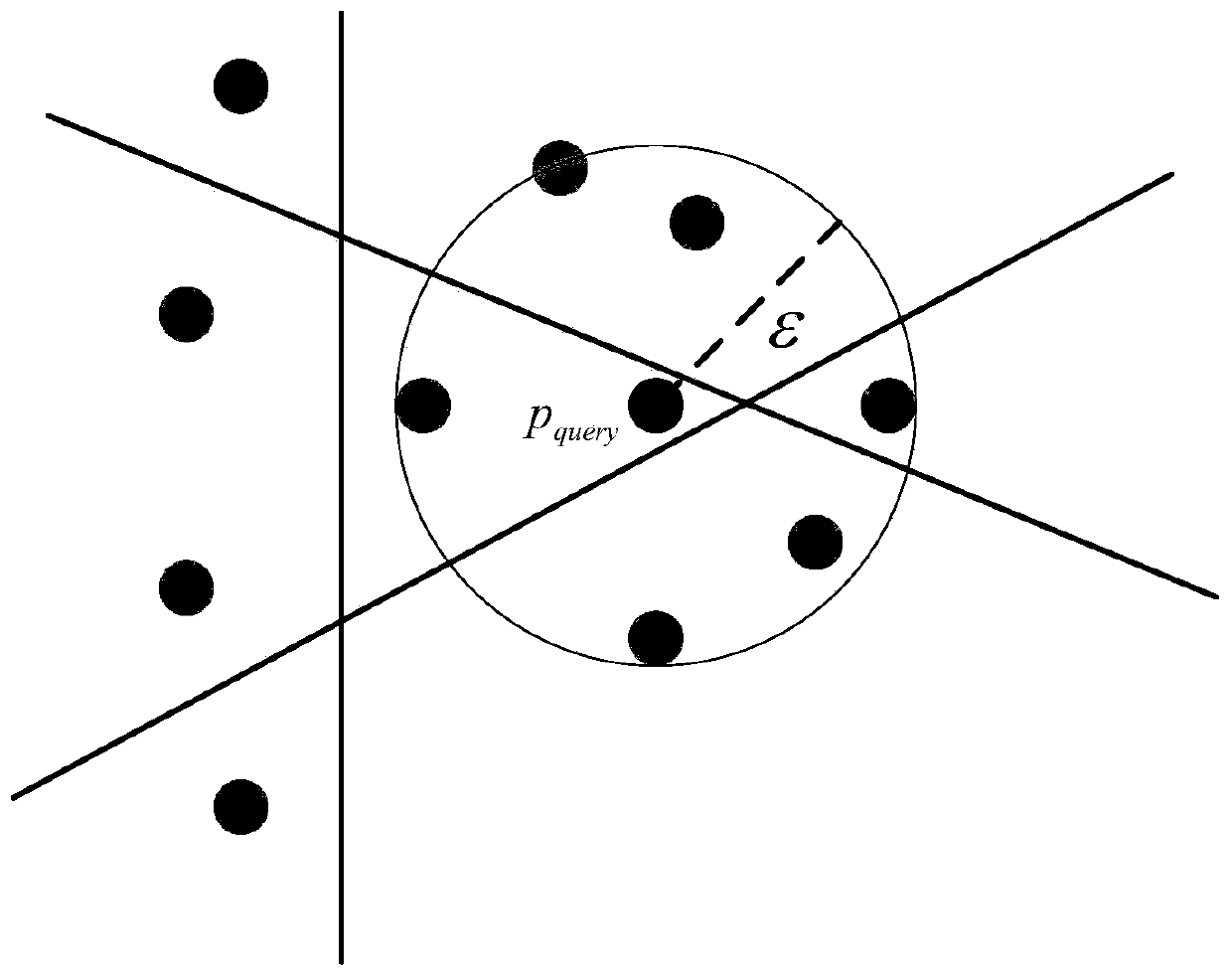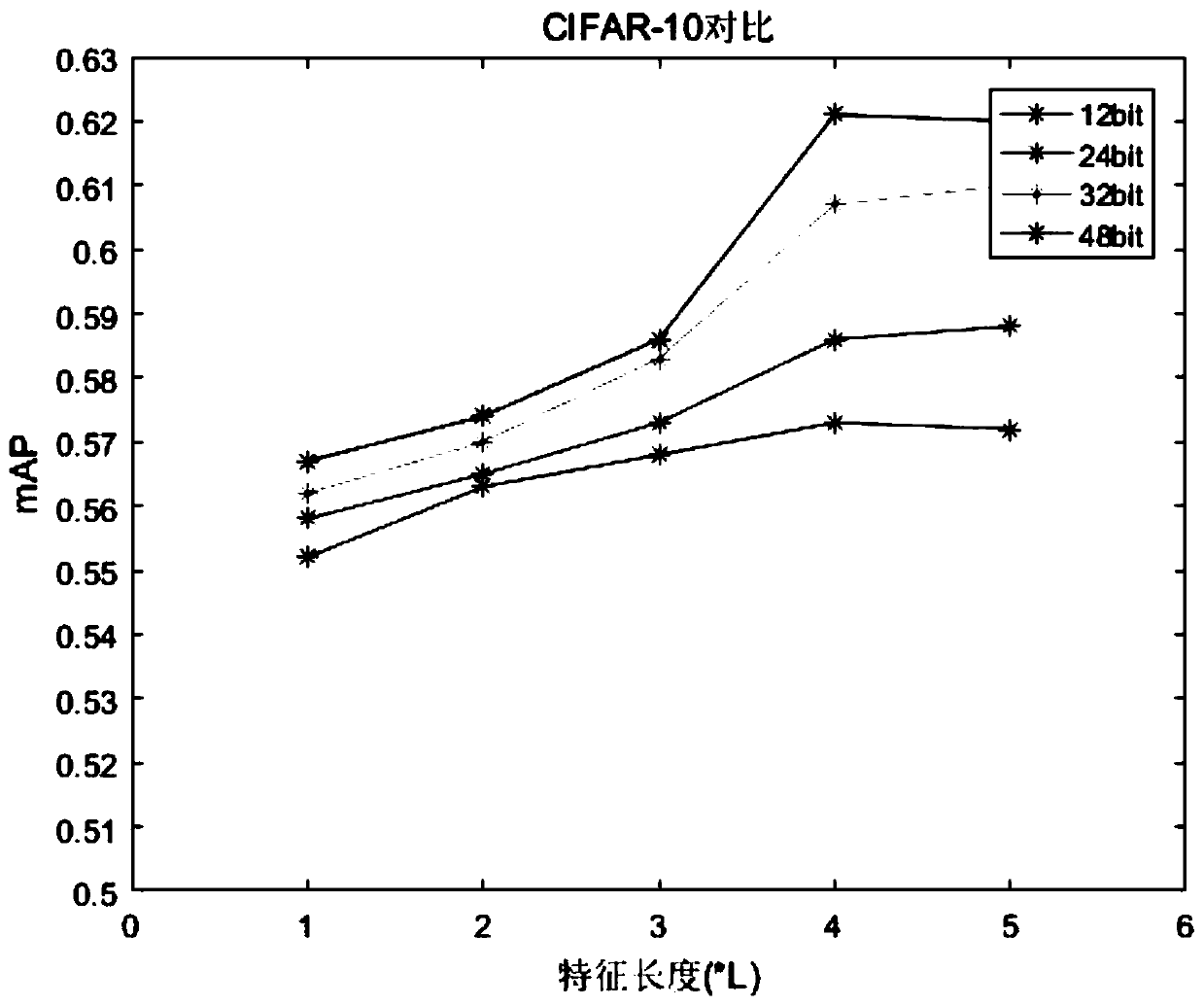Image data rapid retrieval method based on Hash learning
A technology of image data and hashing, applied in the field of fast retrieval of image data, can solve problems such as model deviation, and achieve the effect of good superiority, good visual effect and good performance
- Summary
- Abstract
- Description
- Claims
- Application Information
AI Technical Summary
Problems solved by technology
Method used
Image
Examples
specific Embodiment approach 1
[0041] The image data fast retrieval method based on hash learning of the present embodiment specifically includes the following steps:
[0042] 1. Establish a deep hash model:
[0043] The deep hash model consists of five convolution-pooling layers, two fully connected layers, a feature layer, a hash layer, and an output layer; the feature layer outputs a feature vector of a certain length; then the feature vector is mapped to the hash through the hash layer code. The model structure is as figure 1 Shown, the specific parameters are shown in Table 1.
[0044] Table 1 Model parameters
[0045]
[0046] Structurally, each fully connected layer consists of a single layer of 500×1 neurons and an activation function. The role of the fully connected layer is to connect each feature of the intermediate feature layer, and the relationship between the extracted features corresponds to the different bits of the hash code through the hash layer, so that different sample images ca...
specific Embodiment approach 2
[0067] The process of using the hash code of the query image and the image sample library for retrieval described in this embodiment includes the following steps:
[0068] The hash function obtained by the deep hash model can make each sample image in the sample library have a unique hash code {h 1 ,h 2 ,..., h m}, h i ∈{0,1}. When it is necessary to retrieve similar images of the query sample q, the formula for calculating the Hamming distance from the images in the sample library is:
[0069]
[0070] In the formula, dist H (h i , h j ) is the Hamming distance, and m is the length of the hash code. It can be known from the formula that each bit in the hash code has the same function, and in the process of generating the hash code, each bit of the hash code is a single feature or a combination of multiple features. When using the Hamming distance Ignored when searching. In addition to being unable to express features, in the image retrieval, the retrieval results ...
Embodiment
[0086] Using CIFAR-10 (A. Krizhevsky, G. Hinton. Learning Multiple Layers of Features from Tiny Images [J]. 2012.) and NUS-WIDE (Zhang P, Zhang W, Li W J, etal. Supervised hashing with latent factor models [ M].2014.) data set for experiments to ensure the effectiveness and reliability of experimental comparisons. The experiment extracts 600 image samples from each category in the CIFAR-10 dataset as experimental data, of which 500 image samples are used as training data, and the other 100 image samples are used as test data. Since the NUS-WIDE dataset is a multi-label dataset, if two sample images have the same label, they are considered to be the same sample data. In the experiment, using the same calculation method as others, take the average mAP of the first 5000 returned samples as the final comparison data. It can be seen from the results that FastH, CNNH, and NINH combined with deep neural networks have better accuracy than traditional methods. In CNNH, the hash code ...
PUM
 Login to View More
Login to View More Abstract
Description
Claims
Application Information
 Login to View More
Login to View More - R&D
- Intellectual Property
- Life Sciences
- Materials
- Tech Scout
- Unparalleled Data Quality
- Higher Quality Content
- 60% Fewer Hallucinations
Browse by: Latest US Patents, China's latest patents, Technical Efficacy Thesaurus, Application Domain, Technology Topic, Popular Technical Reports.
© 2025 PatSnap. All rights reserved.Legal|Privacy policy|Modern Slavery Act Transparency Statement|Sitemap|About US| Contact US: help@patsnap.com



